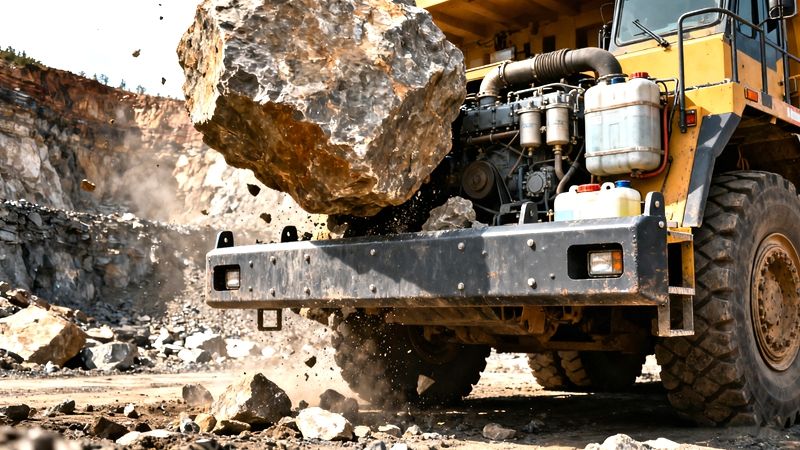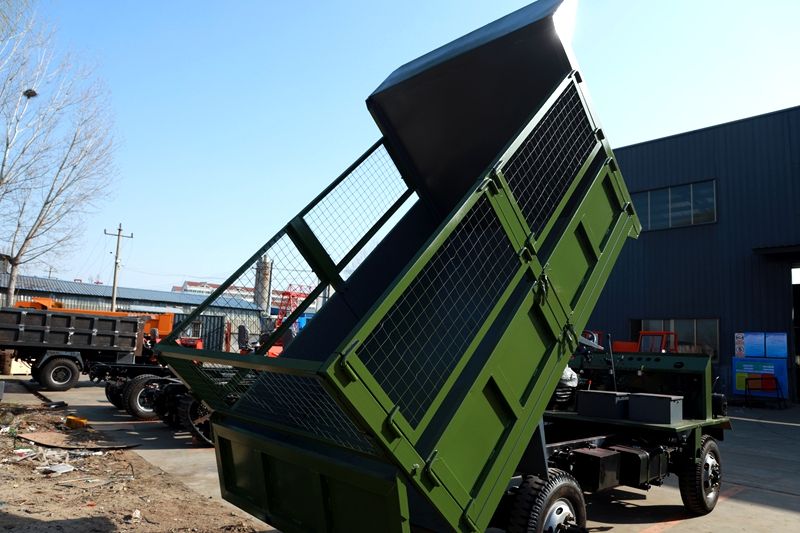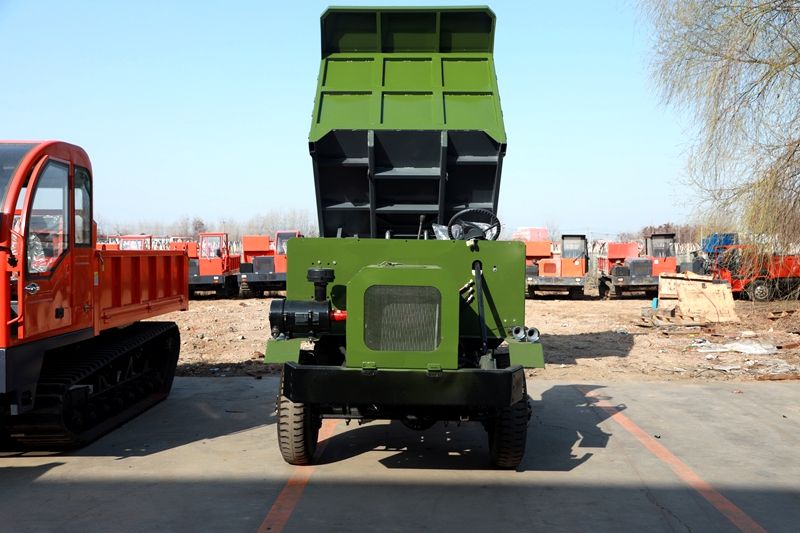New Version of Underground Mining Trucks Launches: Adapting to Underground Hard Rock Mining and Caving Mining Requirements
1 Pain Points of Old Mining Trucks Force the Launch of Basic New Models
Mines engaged in underground hard rock mining and caving mining have always prioritized durability for mining trucks. In hard rock mines in Australia’s Pilbara Region, the ordinary welded carriages of old trucks were often worn through by iron ore gravel, requiring replacement every 6 months. In Canadian caving mines, truck frames were prone to deformation due to rock impact, resulting in transportation interruptions. These problems mainly stemmed from structural and material flaws. To address these issues, manufacturers have launched a new version of underground mining trucks, all standard-equipped with integral ordinary manganese steel frames fixed by cold-riveting technology. The carriages adopt a combined design of low-alloy high-strength wear-resistant steel and high manganese steel. Without relying on complex technologies, the new trucks can cope with the harsh working conditions of underground hard rock mining and caving mining solely through the optimization of basic structures and materials.
2 Three Core Basic Upgrades Solve Underground Mining and Transportation Problems
The core upgrade of the new underground mining trucks is the combined design of "NM450 low-alloy carriages+ Mn13 high manganese steel impact zones". The main body of the carriage is made of 20-millimeter-thick NM450 low-alloy high-strength wear-resistant steel to withstand continuous ore friction. Extra Mn13 high manganese steel liners are welded on high-frequency impact areas such as the carriage inlet and bottom corners to resist hard rock impact. A field test at the Newman Mine of Pilbara Iron in Australia showed that the service life of the new carriage reached 15 months, 2.5 times that of old ordinary steel welded carriages. The high manganese steel liners can be replaced individually, further reducing maintenance costs. For the 20 underground mining trucks operating around the clock at the mine, each truck saves $50,000 annually in carriage replacement costs. The extended replacement cycle also reduces downtime and further improves production capacity.
The second key upgrade is the reinforcement of integral ordinary manganese steel frames with cold-riveting technology. The frames of the new trucks are integrally rolled from high-strength ordinary manganese steel with a 12% manganese content. Key load-bearing joints are fixed by cold-riveting technology, which significantly enhances impact resistance and deformation resistance compared with traditional welded frames. During operations in bumpy underground hard rock mining tunnels, the cold-riveted ordinary manganese steel frames can effectively disperse stress when trucks vibrate frequently and rub against tunnel walls, avoiding weld cracking. A hard rock mine in Utah’s Wasatch Range reported that the new underground mining trucks maintained excellent frame stability when traveling on 20-degree inclined tunnels. Even occasional scraping against tunnel walls did not cause deformation, completely solving the problem of easy damage to old frames.
The third upgrade is the NM400 low-alloy high-strength wear-resistant steel chassis guards. Scattered rocks in underground tunnels are likely to hit truck chassis and damage transmission and fuel components. The new trucks are equipped with NM400 guards connected to ordinary manganese steel frames. These guards are fixed to the cold-riveted frames with high-strength rivets, forming a complete protective structure. After a platinum mine in South Africa adopted these guards, the damage rate of chassis components dropped by 80%. Frequent shutdowns for maintenance are no longer necessary, and each shift can complete 3 more transportation trips, increasing the daily ore transportation volume by 25%.
3 Practical Protective Designs Adapting to Caving Mining
Falling gravel is common in caving mining areas, and the basic material configuration of the new underground mining trucks is well-suited to this risk. Firstly, the fully enclosed integral NM450 low-alloy carriage can securely hold ore. High manganese steel anti-collision strips installed along the top edges of the carriages can resist the impact of falling gravel, preventing ore spillage during transportation which could trigger secondary collapses. After a caving mine in Canada’s Sudbury Basin started using the new trucks, ore spillage was completely eliminated. In contrast, the old trucks averaged one spill-related operational interruption every two weeks.
Secondly, the front and rear bumpers of the trucks are made of thickened Mn13 high manganese steel, seamlessly connected to the ordinary manganese steel cold-riveted frames. Last month, a 2-ton rock fell onto one of the new trucks at the Sudbury Basin mine. The high manganese steel bumper only had a slight dent, while the engine and fuel tank remained intact. The truck returned to service the same day after simple repairs. This protective method, leveraging the impact resistance of high manganese steel, is more direct and effective than complex early warning systems.
In addition, the truck cabs are reinforced with ordinary manganese steel frames, surrounded by NM400 low-alloy guards and high manganese steel anti-collision strips. When operating in caving mining areas, even if gravel hits the cabs, the safety of drivers can be effectively protected. Mine workers reported feeling significantly safer when operating the new trucks, which in turn improved operational efficiency.
4 Remarkable Results from Early Adopting Mines
Mines that took the lead in replacing old trucks with the new underground mining trucks have achieved tangible benefits. The Newman Mine of Pilbara Iron reduced the annual maintenance cost of its truck fleet by $900,000 in the first year and increased ore transportation efficiency by 28%. The caving mine in the Sudbury Basin reduced truck breakdown downtime by 70%, successfully meeting the urgent supply deadline for a major steel producer.
What is particularly recognized by mines is the compatibility of the new trucks. The loading and unloading interfaces of their low-alloy carriages perfectly match the sizes of low-alloy buckets of existing loaders, and the maintenance tools for ordinary manganese steel frames are also compatible with those of old trucks. A copper mine in Chile only replaced 5 new trucks in batches and successfully formed an efficient transportation chain with existing equipment. There was no need for additional site renovations or special tool purchases, resulting in a significant reduction in investment costs.
5 Future Upgrade Directions Focusing on Basic Optimization
Manufacturers’ subsequent upgrade plans will continue to center on cold-riveted frames and manganese steel series materials. On one hand, they will further optimize the thickness distribution of low-alloy carriages, adding higher-grade NM500 low-alloy liners to the easily worn carriage bottoms. Meanwhile, hardened Mn13 high manganese steel liners will be launched for impact zones to extend the overall service life. On the other hand, the maintenance process of cold-riveted frames will be simplified. Special detachable rivets will be designed for ordinary manganese steel frames, allowing mines to complete frame component replacements on-site quickly.
At the same time, in response to the long-hour operation requirements of caving mining, the new trucks will be upgraded with high manganese steel fuel tank guards. While enhancing protection, the fuel tank capacity will be optimized to reduce refueling frequency. These improvements based on basic materials can maintain the high durability of the equipment and reduce the operating costs of mines, continuously adapting to the core needs of underground hard rock mining and caving mining.






